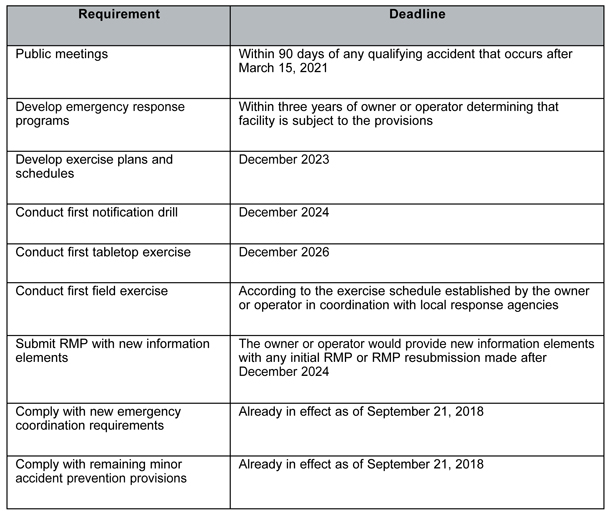On November 20, 2019, the EPA finalized its reconsideration of RMP provisions that had been promulgated in 2017 during the Obama administration (Reconsideration Rule). The RMP rule, found at 40 C.F.R. part 68, requires facilities, or “stationary sources” under the Clean Air Act (CAA), that use, manufacture, and store particular hazardous chemicals above a threshold quantity (TQ) to implement program elements that are intended to integrate technologies, procedures, and management practices. Prior to 2017, the RMP rule requirements had mirrored the requirements found in the Occupational Safety and Health Administration (OSHA) Process Safety Management standard, with some minor exceptions.
In 2015, the EPA initiated a rulemaking to update and strengthen the RMP regulations, and, on January 13, 2017, the agency issued a final rule (82 Fed. Reg. 4594) amending 40 C.F.R. part 68 (2017 Rule). The 2017 Rule added and modified elements of the RMP rule, including incident investigation, third-party audits, STAA, emergency response preparedness requirements, information availability, and various other minor changes to clarify or otherwise technically correct the rule. Following the change in presidential administration, the EPA rescinded the majority of the newly added regulatory provisions in June 2017 for various reasons, including lack of stakeholder engagement. This action was subsequently challenged through petitions for reconsideration and in court. Following arguments on behalf of both industry and a group of states, in August 2018, the Court of Appeals for the D.C. Circuit issued its opinion vacating the EPA’s decision to rescind the 2017 Rule. An accompanying per curiam order reinstated the regulatory requirements of the 2017 Rule.
In light of this decision and to address the court's concerns, the EPA bolstered its rationale in the Reconsideration Rule for rescinding the majority of the 2017 Rule. According to the EPA, the new revisions set forth in the Reconsideration Rule "remove burdensome, costly, unnecessary amendments while maintaining appropriate protections and ensuring first responders have access to all of the necessary safety information," and "better address potential security risks, regulatory consistency and reasonable consideration of costs."
The Reconsideration Rule rescinds the following provisions of the 2017 Rule:
- Third-party audits
- STAA requirements
- Incident investigation requirements for root cause analysis, recommendation deadlines, and destroyed processes, as well as references to "near miss" events
- Training requirements for supervisors
- Process safety information kept "up to date"
- Public availability of hazard information
Meanwhile, the EPA retained the following provisions from the 2017 Rule in the Reconsideration Rule:
- Enhanced coordination with local emergency responders (modified to address security concerns)
- Emergency exercises (with modifications to provide more flexibility to industry and emergency responders)
- Tabletop and field exercises
- Public meetings to provide accident information within 90 days (required following RMP-reportable events with offsite impacts)
The Reconsideration Rule sets forth the following compliance schedule to meet the updated requirements, assuming a December 2019 final effective date through publication in the Federal Register:

The Reconsideration Rule will likely be challenged by a coalition of states and environmental groups. To know more, please read the pre-publication copy of the RMP reconsideration rule.
Stay connected and receive additional EHS Law Insights by following our blog.
Client Alert 2019-277

